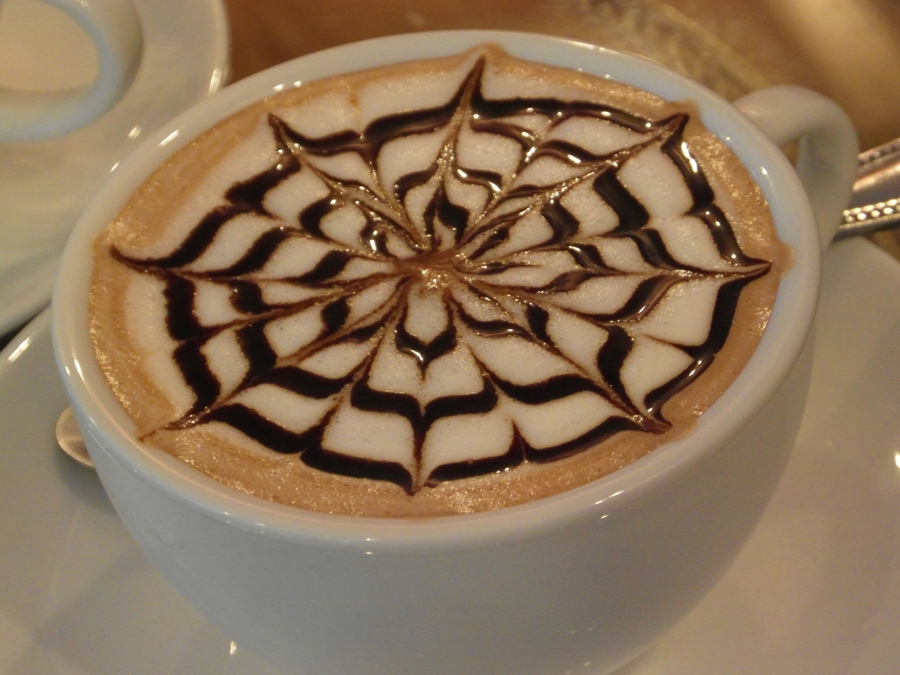Hunger is one of the basic instincts, which is common to all living animals. It ensures the survival of the individual & hence the primary activities of all living organism are directed towards, satisfying their hunger. But humans are an exception in this matter. Food for us is not just for filling our belly, but is also a source of gustatory pleasure. When you think of the foods and drinks, which fulfils this requirement a select few things comes to our minds. If it is a drink and you are a teetotaller, then there is a very good probability that the first thing that would come to your mind is Coffee. In fact there are companies, which have a global presence and earn billions from their multiple outlets selling Coffee in almost, all countries of the world.
We should thank animals for the discovery of coffee; a goat in Ethiopia to be precise. The legend has it that a goat herder named Kaldi, found his goat, full of energy and in high spirits after eating red cherry like fruit from an unknown tree. Kaldi tried the fruit himself & had the same result. The goat herder reported this matter, to a few monks staying nearby, who tried the fruit and found themselves, awake and alert. This result attributed to high amounts of caffeine present in the fruit was discovered much later, as was the preparation of modern day - from coffee bean (seeds) found in the centre of this fruit.
The knowledge about these energizing fruits began to spread and finally reached the Arab world, where the modern version of roasted coffee originated. By the 16th century it’s farming and method of usage was well known in Egypt, Syria, Persia and Turkey. Coffee houses or Qahveh Khaneh, as they were called locally became centres, where people would come to play chess & to enjoy music, and for all kinds of social gathering. By 17th century use of Coffee had spread to Europe, where the Dutch called it Koffie and the English gave it the name of – Coffee.
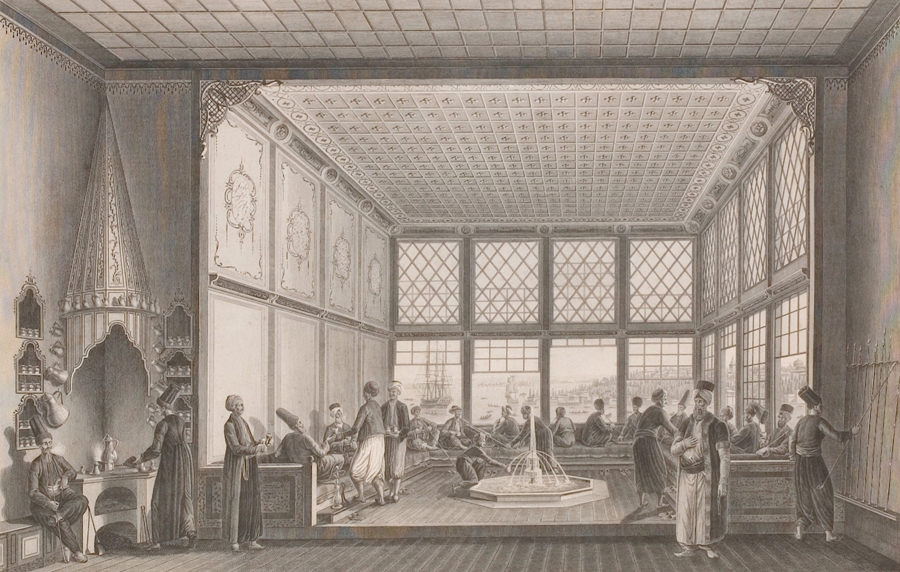
Those who are in love with their coffee, know very well that coffee comes in various tastes and flairs. That would not be surprising, if you consider the fact that, more than two billion cups of coffee are being consumed by people worldwide every day. There are mainly 2 types of coffee, depending on coffee bean (Seeds ) – Coffee Arabica (which has many subtypes) and Coffee Robusta.
3/5th of the produced world coffee is of the variety – Coffee Arabica and the rest is Coffee Robusta and other varieties. It is widely believed that Coffee Arabica is better than Coffee Robusta (although there may be exceptions). The reason for the stated facts stems from the fact, that the Arabica variety contains more sugar and fat ; whereas the Robusta variety has more caffeine, giving it a bitter or unpleasant taste . This reflects in the price factor too, as the Arabica variety is almost double the price of the Robusta variety. Maybe the only reason people grow the Robusta variety is that it is easier to grow, is least effected by the environment, less sensitive to disease and insects, and gives a higher amount on production.
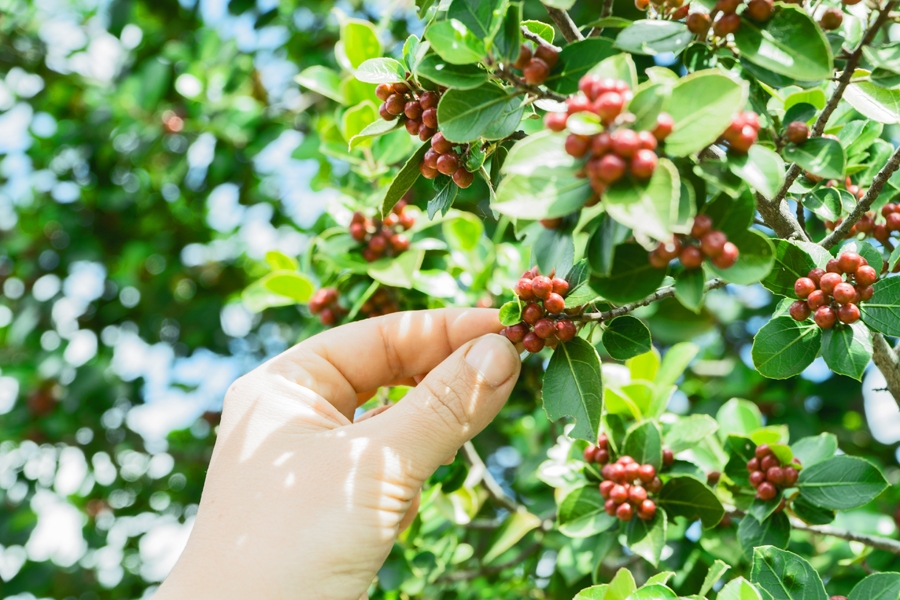
Many times to reduce costs, a blended variety of the above two varieties are also used in the market. The other variety of coffee depending on beans are – Liberian Coffee, Congo Coffee, Bengal Coffee and Sierra Leone Coffee. But these are almost absent in international market and hence merits no further discussion.
Depending on the preparation, there are a multitude of options present, with some believing the figure between 30 to 40. It is no wonder that the chain of outlets selling coffee, throughout the globe, have a business in billions. The main types are --
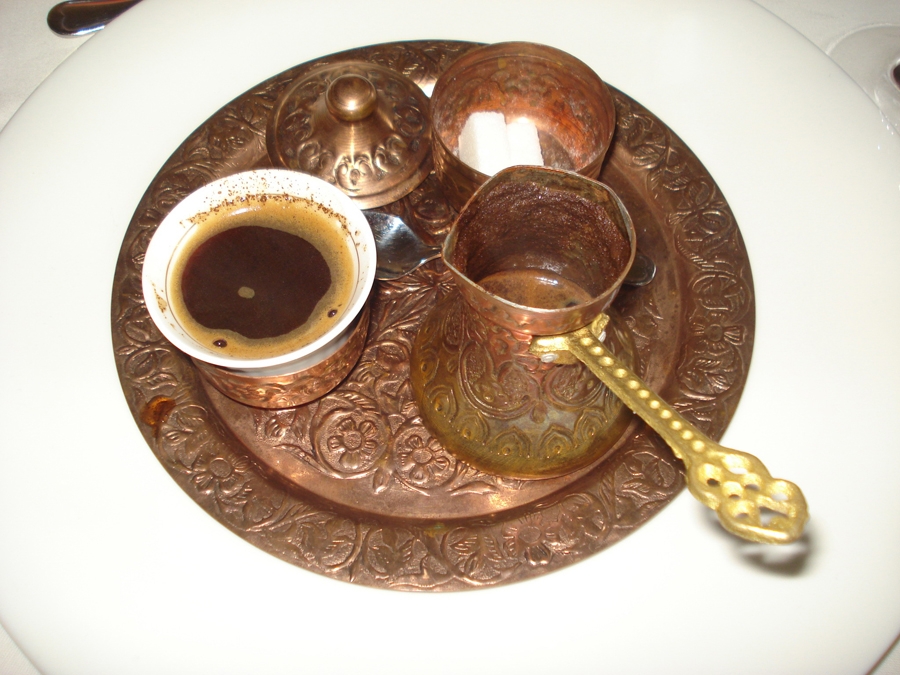
There are many more on the list and new ones crop up regularly, thanks to the innovative ideas of chef’s across the world.
The word - Kopi Luwak, is of Indonesian origin, where the word ‘Kopi’ means Coffee & ‘Luwak’ is the regional name of ‘The Palm Civet’ – a small mammal which is also known as civet cats. The credit for the discovery of this costliest variety of Coffee in the world, goes to this animal of Indonesia, which literally choses the best variety of coffee by eating it first, so that humans can get the taste of the finest Coffee of the world.
Of course the story would be incomplete without mentioning the link to dark chapters of colonial European imperialism, and not so charitable actions of the Dutch colonial masters of Indonesia. They owned all most all of the coffee plantations of the land, but would not let the local farmers, get a taste of their fruits of labour literally. So the poor plantation workers were left to their own devices. As has been said many times - necessity is the mother of invention . So these hapless workers, devised their own novel idea. They found that the local civet cats ate the coffee cherries, and after almost 36 hours passed out the seeds of these fruits in their faeces. When these seeds were processed and later tasted, it was found to be much better than the conventional variety. The Lord indeed does, work in mysterious ways.
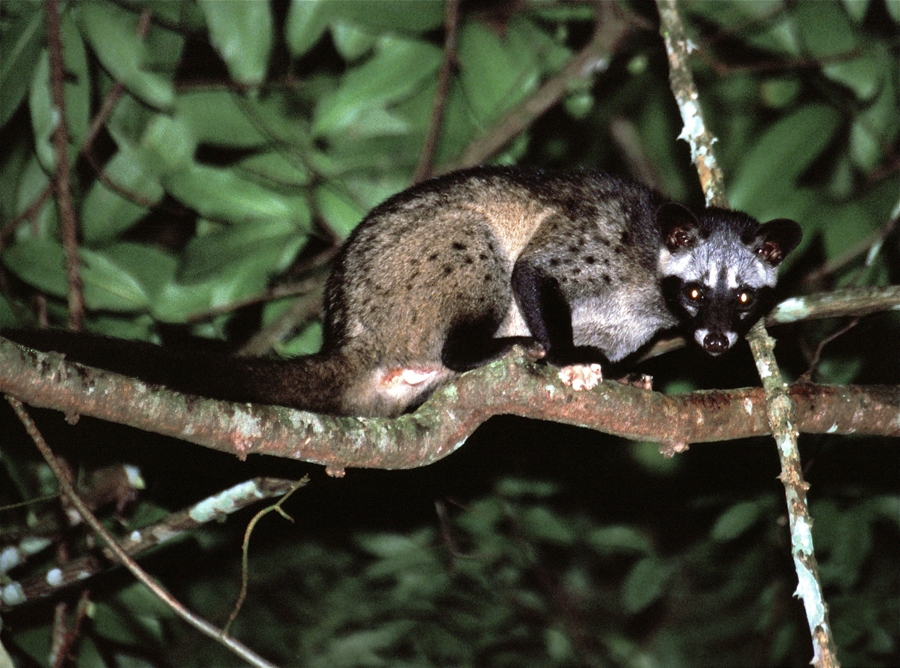
Very soon the big and bad imperialistic rulers found out that something was fishy, or more precisely faecal in this case. The secret was out & suddenly every one wanted to drink sh*t, and not just that, were also were ready to hand over a small fortune, just to have a small sip of this famous piece of sh*t.
By this time everybody knew that Civet cats ate the healthiest coffee cherries, which after digestion gets pooped back out by the animal. An industry developed in which ,this poop was then collected and cleaned multiple times, before being sold in the market. The beans (seeds) are of the best quality because they were naturally selected by the civets (who choose the most ripe and flawless ones -- usually of the Arabica variety) and they are also fermented during the digestion process in the civet’s intestine giving the coffee an outstanding taste. The price of 1 cup of coffee, costs anything between 20 to 60 Pounds and 125gms of Kopi Luwak will make your purse lighter by 250 Pounds.
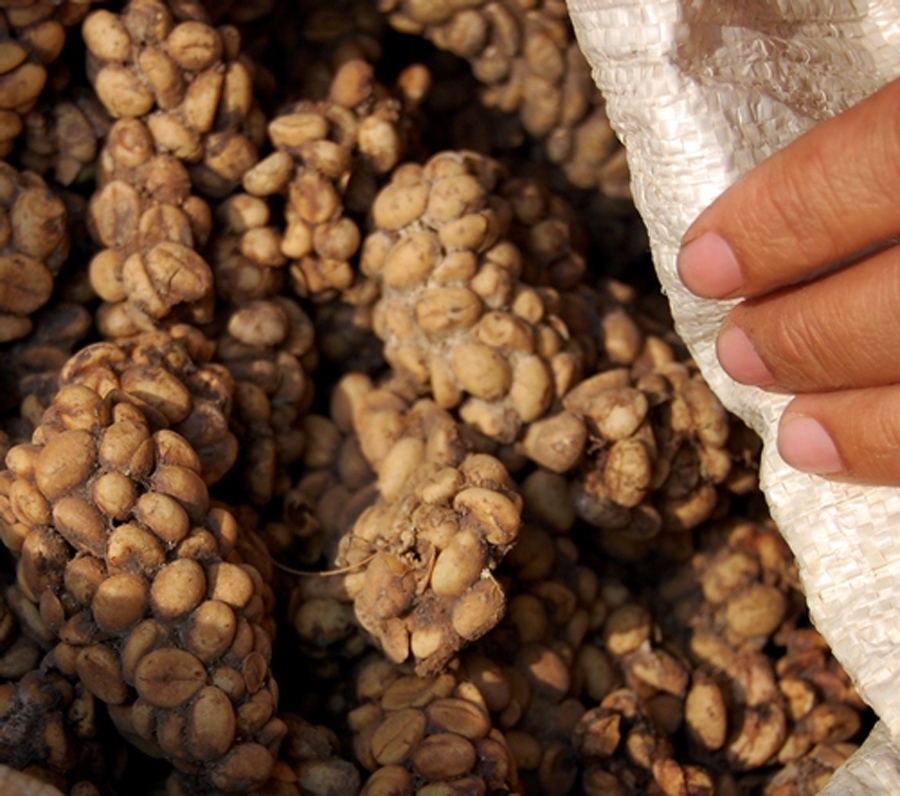
The exceptional high cost is because of the fact that - the seeds(beans) are difficult to harvest, the Civet will carry the beans(seeds) for almost day and half in it’s body, before passing out this brown gold in it’s faeces. These seeds which are defecated in clumps, still retains some amount of fleshy covering. These are washed and then further processed by roasting, to remove bacteria and other pathological organisms. These complicated procedures restricts the harvest to only 500 kg a year, thereby raising the cost of this variant of coffee significantly.
Indonesia and it’s islands – Sumatra, Bali, Java and Sulawesi, found international recognition for producing the costliest variety of Coffee, with Sumatra becoming the largest producer. Smaller amounts are also produced in islands of Philippines, East Timor and Vietnam.
Money always brings controversy with it and Kopi Luwak is certainly no exception. The controversy is related to both the method of production, as well as the final product. The reasons for concern can be summarised as
1) Animal Cruelty
The origin of Kopi Luwak was from the stool of the solitary civets roaming in the wilderness and choosing the fruits on their own free will. This in no way harmed the animals, but sources like these were always less to fulfil the market demands. The unbelievable success of this variant of coffee, created a breed of morally corrupt farmers/businessmen who captured those wild civets and kept them in captivity, sometimes in close proximity of other similar animals. These innocent creatures were then force fed, any variety of coffee cherries available to workers, in these artificial market oriented farms. The result was, the normally solitude preferring animals when placed in crowded areas, fought among themselves and sometimes also chewed their own arms and legs in mental frustration. Force feeding them only & exclusively coffee cherries made them sick. Soon they would pass blood in the stool and die. These events of cruelty and inhumane treatment, have evoked strong oppositions from animal rights activists.
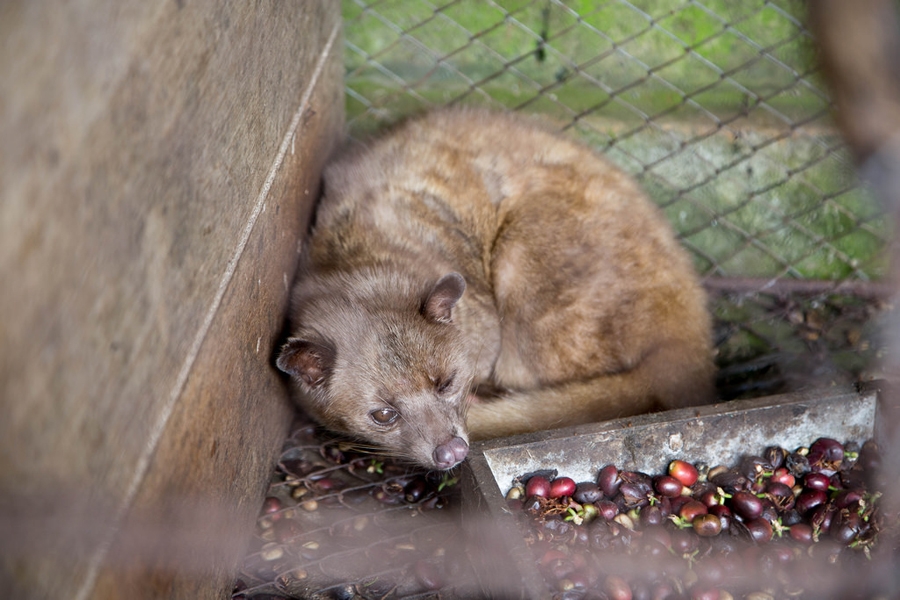
2) Sh*tty taste
When the civets do not get to choose what they eat, the whole principal of Kopi Luwak gets compromised. Force feeding by farmers of any variety of coffee cherries, certainly compromises on the choice of the coffee fruit. Force feeding in captivity and ill health, again influences the final result. Even the Kopi Luwaks, which are available in the natural way, can be unpredictable. Sometimes the taste is unsatisfactory, as the type of fruit ingested by the civet cats may not have been of the highest quality, due to unavailability of better options to the animals. The quality may also be affected by inferior technique of collection, roasting, ageing and brewing. Quite often people who pay an astronomical amount for this legendary coffee, complain that they did not get a fair deal.
3) Artificial Imitations
Every costly item in the market soon faces a challenge from cheaper & artificial imitations. Kopi Luwak is also the victim of it’s success. Many researchers and companies, have found artificial ways of fermenting the coffee fruit, which normally happens in the stomach of civet cats. These artificial and commercial processes, which tries to attempt an alternate path to replicate the digestive process of civet cats, in a laboratory; raises controversial questions regarding the efficacy and success of the whole procedure.
4) Fake Kopi Luwak
Many business men try to sell the Kopi Luwaks from caged animal as that obtained from animals in the wilderness, for an exorbitant price. Other animals like birds, bats and elephants have also served as substitute animal provider of the coffee seeds. Coffee obtained from these sources, are of questionable quality. The original product, which is obtained from animals in their natural habitat is unable to fulfil, the market requirements . To earn a high level of profit, many unscrupulous traders sell, inferior quality of coffee relabelled as Kopi Luwaks. Sometimes it is only the professional coffee tasters (commonly called as cuppers), who could tell the original one.
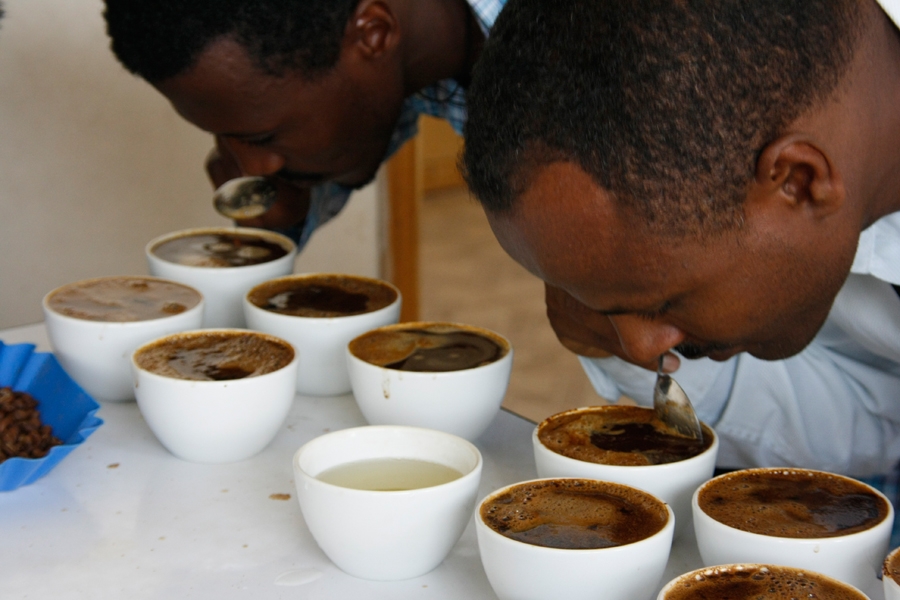
It is estimated that almost 70% of the stuff in the market, which is sold as pure Kopi Luwak coffee, is anything but that. This has already been explained previously as the result of actions of unscrupulous businessmen, who mix a small amount of Kopi Luwak to an inferior quality of coffee and sell the combination at a higher price. The food scientists can find the difference, by higher level of pyroglutamic acid, inositol, citric and malic acid in the real thing.
For ordinary people who do not have a complex biochemical backup, are forced to rely on other measures. The simplest way would be to, check the authenticity of the supplier. Many genuine companies provide picture of their farms, source of processed coffee beans and other important details to their clients.
For people who are more inquisitive it would be helpful to know that ; the real beans are yellowish green, with leafy smell and of uniform size and doesn’t have black spots on it’s surface. The fake ones are less uniform and has more broken structures and rice like smell.
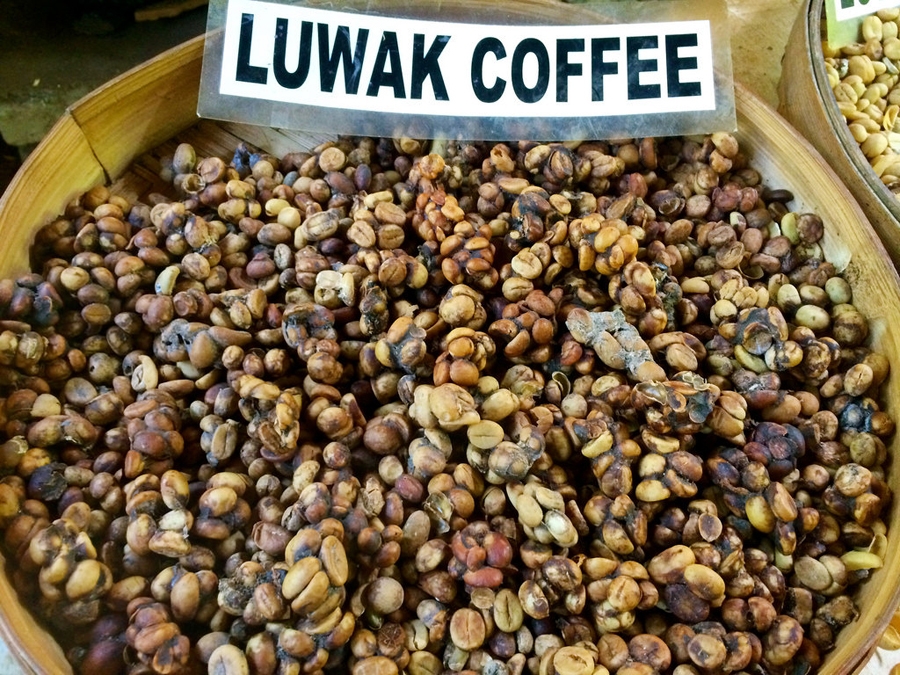
On preparation, the real stuff is very smooth, much less bitter (than the spurious variety) and thick like syrup. It certainly does not cause any irritation or burning when ingested and is easy on the throat and stomach, because of less acidity and caffeine content.
The final confirmation would be to understand it’s preparation process & realising the fact, that real Kopi Luwak, would not be available in the market in wholesale or cheap prices.
The discovery of the costliest coffee of the world, by the poorest segment of exploited farmers, changed the flavour of the Coffee industry for ever. Is the much publicised cat poop coffee, which happens to be the most expensive coffee in the world, really worth your consideration and money ? The answer may vary depending on whom you ask. But the story of ingenuity of poor plantation workers did give the world, an unprecedented act, where even the waste product of animals could be sold for a mini fortune. Truth is indeed stranger than fiction.
